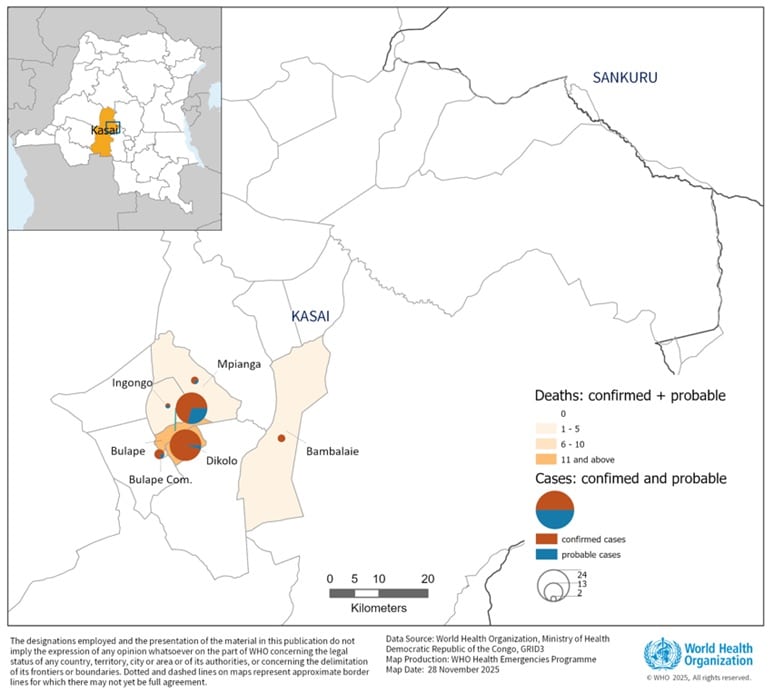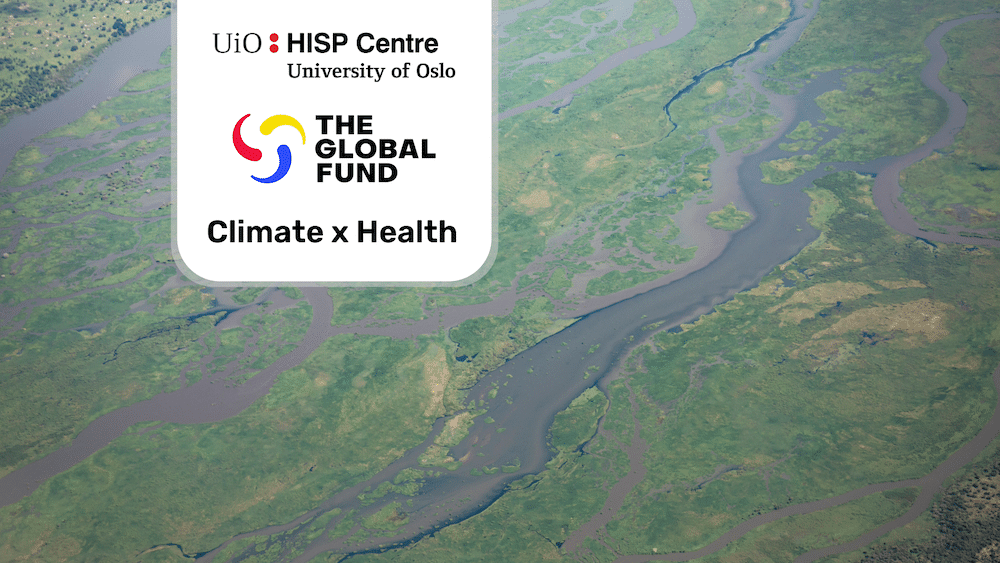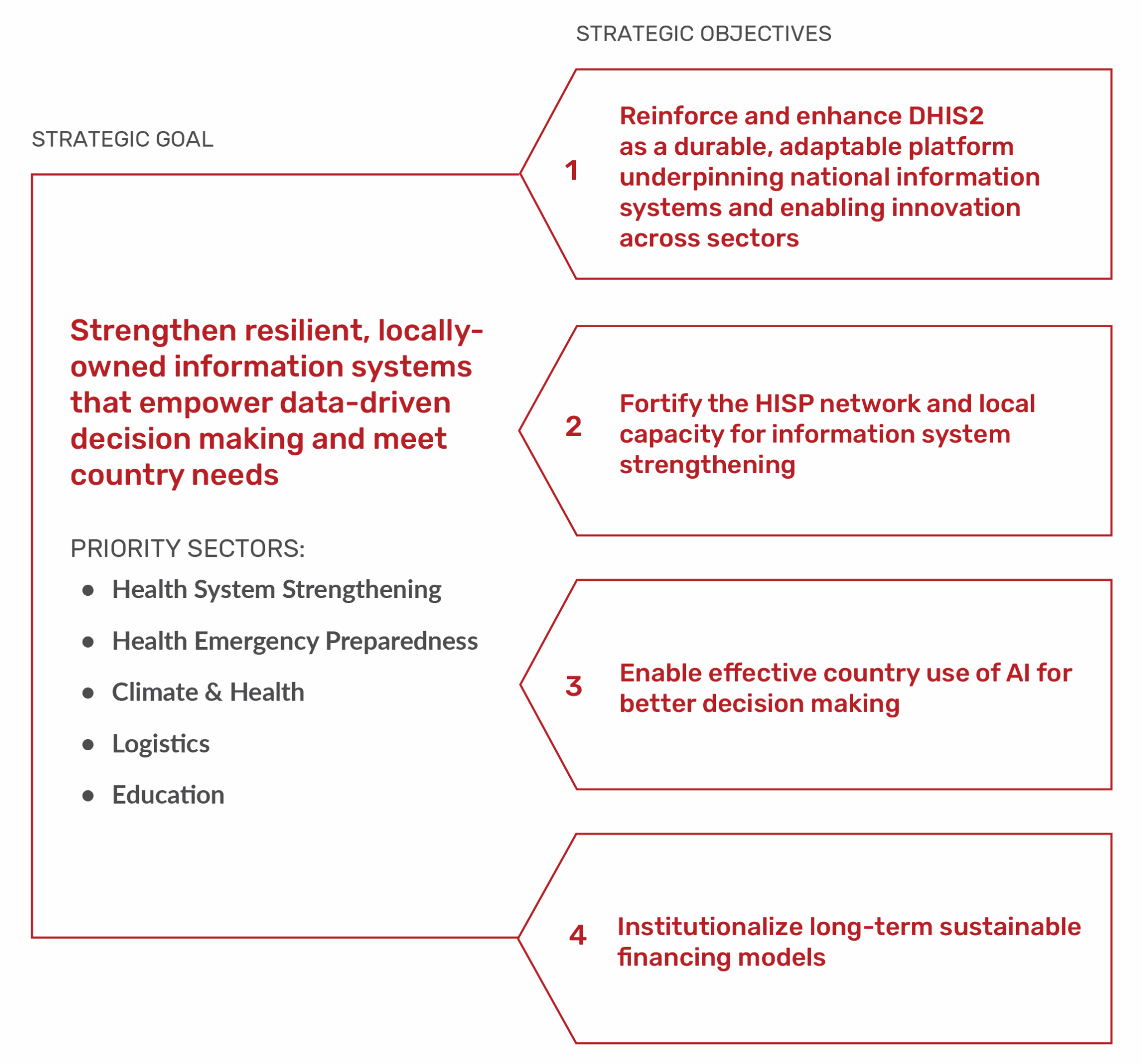
Rwanda leverages DHIS2 to help respond to Marburg virus outbreak
The Ministry of Health, with support from WHO, HISP Rwanda, and other partners, acted quickly to control the spread of this deadly disease, achieving the first recorded recoveries from severe Marburg cases in history.
Marburg Virus Disease (MVD) is a highly virulent disease related to Ebola that can cause hemorrhagic fever and death, with a case fatality rate between 24-88% (WHO). There have been 18 reported outbreaks of MVD since the disease was first discovered. The most recent outbreak was declared in Rwanda on 27 September 2024. In response, the Government of Rwanda – with assistance from WHO and other partners – has rapidly launched measures to bring the outbreak under control, leveraging DHIS2 for data collection and monitoring at all levels of the response.
As of 20 October, health authorities in Rwanda had identified 62 confirmed cases of MVD, of which 43 successfully recovered from the disease. This includes several patients with severe symptoms who “would have died in previous outbreaks,” but whose lives were saved thanks to the effective response of Rwanda’s authorities, including the top-level leadership of the President and Minister of Health, and the advancements the country has made in strengthening its health system over many years, according to Dr. Tedros Ghebreyesus, Director-General of the WHO.

During his visit to Rwanda on 20 October, Dr. Ghebreyesus visited the MVD command post in Kigali, where he was given a demonstration of the DHIS2 dashboard for monitoring the outbreak response and an overview of the information system architecture connecting all stages of the response to DHIS2. Key information from this dashboard is shared with the public on the Ministry of Health on their website, along with useful information to help prevent the spread of the disease.

Acting quickly to respond to Rwanda’s first outbreak of a deadly disease
MVD spreads between people due to contact with bodily fluids from an infected person. The virus’s long incubation period (up to 21 days) means that contact tracing is critical to identify and test potentially infected individuals as early as possible to prevent the further spread of the disease.
The outbreak in 2024 is the first time MVD has been reported in Rwanda. The virus was identified through laboratory testing of suspected cases by the Rwanda Biomedical Center on 26 September, and the Ministry of Health announced the confirmation of the outbreak the next day. Within three days, 26 cases had been registered across 7 districts, and 300 contacts of infected persons were already under follow-up. Within three weeks, more than 4,700 people had been tested for MVD, and more than 1,000 vaccine doses had been administered.
Building on existing DHIS2 systems and lessons learned from COVID-19 and Mpox
This rapid response was facilitated by Rwanda’s ability to leverage existing digital tools and experiences from the COVID-19 pandemic – and the ongoing regional Mpox outbreak – to quickly deploy a functioning surveillance system for MVD, with technical assistance from HISP Rwanda.
Rwanda’s information system for MVD surveillance uses DHIS2 as its primary platform, and supports all stages of the response, including reporting, testing, treatment, and contact tracing processes, as well as outbreak monitoring and coordination. The same DHIS2 instance supports sample collectors, testing labs, treatment centers, isolation centers, and health facilities. The system leverages Tracker for individual-level data management, allowing health workers in a variety of roles to follow and update each individual reported case digitally using the same platform.
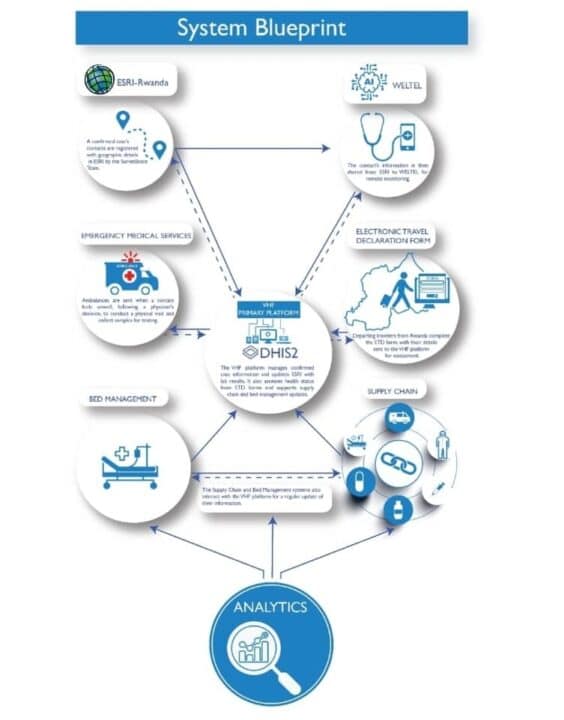
For a new suspected case, the sample collection team enters case data into a lab request in DHIS2. The National Reference Laboratory and Regional Labs use DHIS2 in their workstations for lab reception, lab processing, and results distribution. In addition, the system is integrated with other platforms, including bed management, call centers, ambulance services, contact tracing, the medical supply chain system, and even the travel declaration form at the airport. As a result, case management and lab results processing has become more streamlined, with results and status updates available in DHIS2 in real time. This information from all components of the MVD response is then displayed on an interactive dashboard, informing the government’s response to the outbreak.
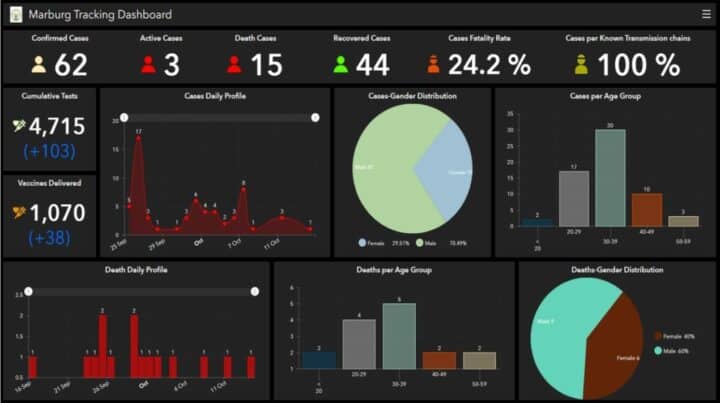
Andrew Muhire of Rwanda’s Ministry of Health praised the role of DHIS2 in the country’s MVD response. “DHIS2 is once again the best tool in conditions of critical pressure,” he said. “It is a flexible tool that can act as the primary platform in our digital ecosystem with high capabilities for integration. It is easy to customize, and our experience from COVID-19 created more confidence and direction on how to establish a working surveillance system and workstations using DHIS2. After COVID-19, we generated a generic case management form that we were able to use as a basis to quickly customize the MVD system.”
Learn more about DHIS2 for Disease Surveillance & Response
